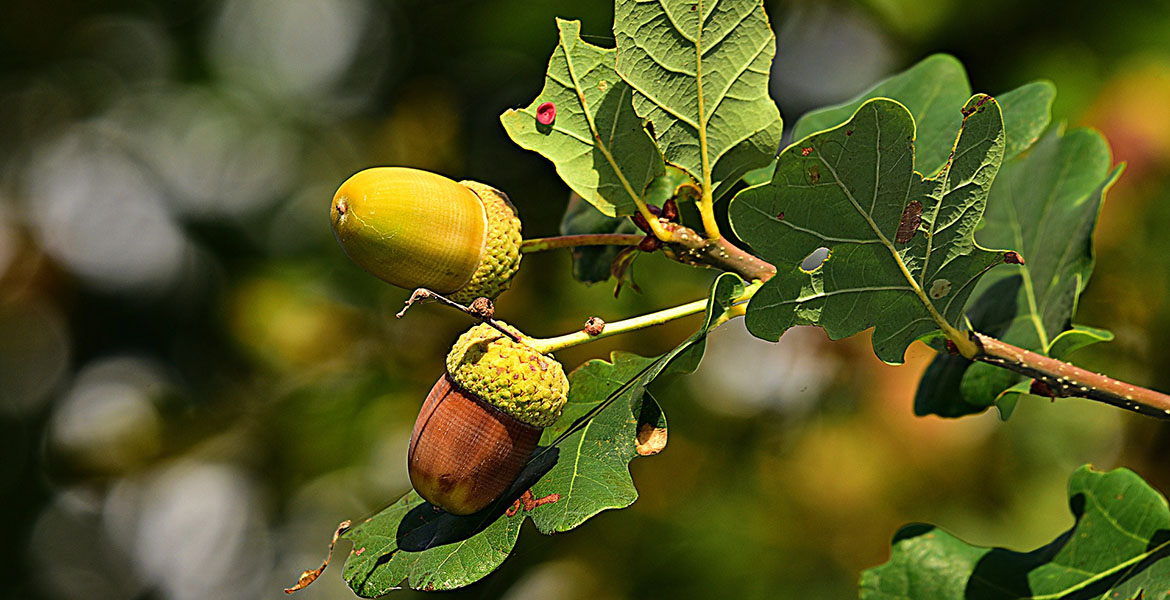
Got oak? Be careful
Monday, March 8, 2021
Oklahoma is known for beautiful, shady oak trees. Springtime brings new leaves, buds and blooms while fall brings acorns that cover the ground in grazing areas. All that can spell trouble for livestock. Dr. Meredyth Jones and the team at OSU’s Veterinary Medical Teaching Hospital and the Oklahoma Animal Disease Diagnostic Laboratory recently partnered with an Oklahoma livestock producer and his veterinarian on a suspected herd outbreak of oak toxicity.
Leaves, buds and acorns may all cause problems with livestock. Although the exact cause of the toxicity is not known, the long-held theory is that tannic acid, present in all parts of the oak tree, is the culprit. Many experiments have been conducted where tannins were fed and injected into a variety of species. The results of these studies, however, have often failed to produce the exact syndrome seen in livestock that consume oak.
Regardless of the exact cause, we do know that the buds, small leaves, flowers and stems are all toxic and are palatable to livestock. As the leaves age, they become less palatable, posing less risk. This is why poisoning occurs most commonly in the spring. However, acorns can cause toxicity in the fall or winter, particularly after a summer draught. It is also interesting to note that oak can be toxic to humans. Native Americans produced a meal from acorns, but they removed the outer hull and repeatedly leached the meal prior to consumption in order to remove the toxins.
All livestock species are potentially at risk, with cattle and sheep most commonly affected. Goats, because they are a browsing species like deer, are designed to be a bit more resistant to some toxic plants as compared to grazing species like cattle and sheep. However, they are still susceptible and, because of their climbing behavior, often have better access to plant parts. Additionally, horses and chickens may be affected, while swine appear to be resistant. While nursing calves seem to be more susceptible, oak toxicity can occur at any age.
In April 1935, 502 cattle and 426 sheep died in Sutton County, Texas, after a drought left no other forage available. This pattern of oak toxicity continues today. Where forage is otherwise limited, cattle will search and be attracted to consume toxic plants of all types. Unfortunately, death can be sudden from oak toxicity, with sheep and cattle dying within 24 hours after onset of illness. In some cases, they may live up to 10 days.
The tannins or other toxic components of oak cause direct damage to the kidneys and lining of the stomach and intestines. The symptoms may include constipation or diarrhea. The stool produced may be bloody or black and sticky like tar. Livestock will lose their appetite, have a rough hair coat and dry muzzle, and may act colicky. If you are able to observe urination, the urine may be reddish or brown. This is typically short-lived and may go unnoticed.
If initiated early, treatment of oak toxicity can be successful using fluid therapy to support kidney function and measures to stimulate and maintain appetite. Cattle that will continue to eat often make a complete recovery. In one study of steers, those affected by oak bud toxicity actually demonstrated improved weight gains and feed efficiency in the feedlot, showing that they could catch up and compensate. Livestock producers should always investigate unexplained deaths on their operation through the necropsy of freshly dead animals. Oak toxicity has very specific signs that can be seen in the carcass.
As with all disease, we like to focus on prevention over treatment. So, what can you do, short of total oak tree removal from your property, to limit potential toxicity this spring and fall?
- If available, put livestock in pastures without oak trees during the spring and fall.
- Always have adequate feed as forage available. Cattle who are satisfied are less likely to eat oak and, if they do, the toxic oak will be diluted in their system by the appropriate feeds.
- Make sure fresh water is always available. This helps with overall kidney health and can help wash the toxic tannins out of their systems to limit damage.
- Toxicity has occurred from livestock drinking water from sources where oak leaves had been soaking. Be sure to clean leaves out of water tanks regularly.
- Remove any downed branches from the pasture when first noticed.
- Don’t forget that oak can be toxic to humans — monitor children around trees and don’t allow them to chew on leaves or acorns.
Your veterinarian is always a great source of information on potential risks and opportunities to improve the environment for animal health on your operation. Importantly, remember that OSU’s Veterinary Medical Teaching Hospital and the Oklahoma Animal Disease Diagnostic Laboratory represent a tremendous resource available to all Oklahoma cattle producers — a team approach with your local veterinarian and the clinicians and diagnosticians at OSU.
About the author: Dr. Meredyth Jones is an associate professor in the food animal medicine section at Oklahoma State University’s Veterinary Medical Hospital at the College of Veterinary Medicine. She earned her DVM degree from Oklahoma State University and is a Diplomate of the American College of Veterinary Internal Medicine (Large Animal).
Veterinary Viewpoints is provided by the faculty of the OSU Veterinary Medical Hospital. Certified by the American Animal Hospital Association, the hospital is open to the public providing routine and specialized care for all species and 24-hour emergency care, 365 days a year. Call 405-744-7000 for an appointment or more information.
